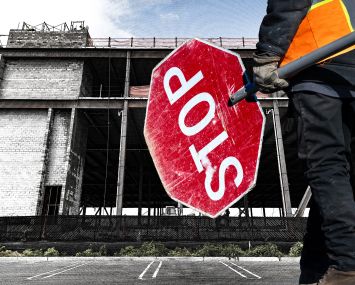Developing Luxury Retail Stores: What Matters, Part I
By Barry LePatner August 15, 2013 7:00 am
reprintsNew York City’s luxury retail market is absolutely booming. And in today’s environment of social and sophisticated interactive online media, physical environments play a pivotal role in validating the consumer’s perception of any brand. This is particularly the case for luxury goods retailers because it is in their environments that the customer experience and brand value are realized.
Yet the act of planning these physical environments is often plagued by compressed project schedules and ongoing design changes during construction; this leads to runaway costs, missed opening dates or both.
Many luxury goods retailers spend tens, if not hundreds, of millions of dollars annually on renovating and building out their retail locations. Given the lucrative holiday season’s potential for driving sales, an early fall opening—as opposed to a spring opening the following year—may seem like an obvious choice.
But shortening the planning period to achieve an earlier—and often unrealistic—opening often results in unanticipated cost overruns and the very schedule delays the retailer is trying to avoid. The increased costs and delays ultimately eat into the pro forma projections used to rationalize the project in the first place.
Drawing lessons from our recent experience serving as construction counsel and project manager for a build-out with a very aggressive schedule of a major luxury goods retailer’s new store in a major urban historic district, every retailer should take the following into consideration.
Location: This goes without saying. But what many luxury retailers don’t initially realize is their desire to locate in culturally vibrant urban neighborhoods, such as Soho in New York City or certain locations in Paris, London or Tokyo, means increased development costs. Such costs can be attributed to renovation of older building stock, especially integration with or replacement of older heating, plumbing, sprinkler and other life-safety systems related to residential neighbors or other non-retail occupancies; construction and delivery logistics and restricted work hours; or local landmark laws, input of community groups and abiding by strict municipal noise ordinances.
Planning: The expected outcome is a store design consistent with the brand image accomplished within a given project budget and schedule. But this is often easier said than done. The smart project management team must have a comprehensive grasp of not just the elements and coordination of the design, but also an understanding of how procurement, fabrication and the construction schedule are impacted by written specifications for the project.
Greater front-end coordination is often necessary to avoid unforeseen expedited delivery and overtime costs. The sophisticated project management team can mitigate some of the uncertainty surrounding procurement and performance of certain items by adhering to strict criteria about when to include new and novel items into its brand-standard specifications. Those criteria should include confirmation from the manufacturer regarding applicable use and expected performance prior to the items’ inclusion in the construction documents. It should also include sufficient time in the planning schedule for mockups and the submittal of test samples. If there is insufficient time for coordination and timely procurement of novel specifications, alternate proven materials and details should be selected.


